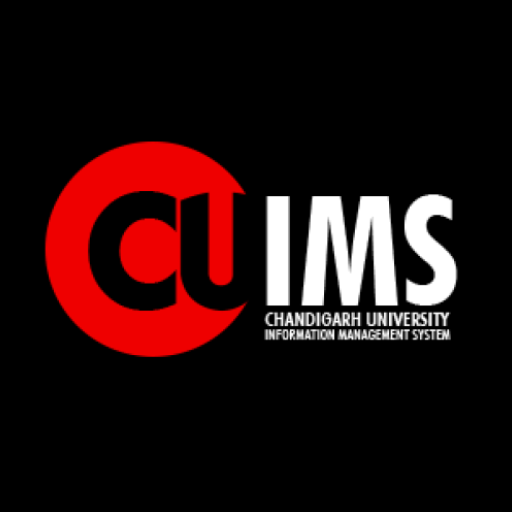I. Introduction
CUIMS, or Chandigarh University Management System, is a comprehensive platform designed to enhance the educational experience for students and faculty at Chandigarh University. As an integrated system, CUIMS streamlines various academic and administrative functions, providing a centralized hub for information and task management. The system’s development is a significant step forward in modernizing education, making it more efficient and accessible.
CUIMS serves as an essential tool for students, faculty, and administrative staff, offering features that cater to a wide range of needs. Whether it’s managing course registrations, accessing learning materials, or handling administrative tasks, CUIMS provides a seamless and user-friendly experience. The relevance of such a system in today’s educational landscape cannot be overstated, as it aligns with the growing trend of digital transformation in education.
In this article, we will explore the various facets of CUIMS, its features, benefits, implementation, and future prospects. We’ll also delve into personal stories and expert insights to provide a well-rounded understanding of how CUIMS is revolutionizing the educational experience at Chandigarh University.
II. Key Features
1. Student Information System (SIS)
The Student Information System (SIS) within CUIMS is a robust module that handles all aspects of student data management. From personal details and academic records to fee payment history and attendance, the SIS provides a comprehensive overview of a student’s journey. This feature not only aids students in keeping track of their progress but also assists faculty and administrative staff in managing student-related tasks efficiently.
2. Learning Management System (LMS)
The Learning Management System (LMS) is a pivotal component of CUIMS, offering a centralized platform for course management, content delivery, and assessment. Through the LMS, students can access lecture notes, assignments, and multimedia resources, enhancing their learning experience. Faculty members can easily upload course materials, create quizzes, and track student performance, making the LMS an invaluable tool for both teaching and learning.
3. Administrative Tools
CUIMS includes a suite of administrative tools designed to streamline various processes such as course scheduling, fee management, and hostel allocation. These tools enable efficient management of resources and ensure smooth operation within the university. By automating routine tasks, CUIMS reduces the administrative burden on staff, allowing them to focus on more strategic initiatives.
4. Communication and Collaboration
Effective communication is crucial in any educational institution, and CUIMS excels in this area by providing multiple channels for communication and collaboration. Whether through announcements, email integration, or discussion forums, CUIMS facilitates clear and timely communication among students, faculty, and staff. This feature enhances the overall experience by fostering a sense of community and engagement.
5. Mobile Access
In an increasingly mobile world, CUIMS offers a mobile-friendly interface that allows users to access the system on-the-go. This feature ensures that students and faculty can stay connected and manage their tasks from anywhere, at any time. The mobile access feature is particularly beneficial for accessing urgent updates, submitting assignments, or participating in discussions outside of traditional classroom settings.
III. Benefits of CUIMS
1. Efficiency in Administrative Tasks
One of the primary benefits of CUIMS is the efficiency it brings to administrative tasks. By automating processes such as course registration, fee payments, and hostel management, CUIMS significantly reduces the time and effort required for these activities. This efficiency translates to cost savings for the university and a more streamlined experience for students and staff.
2. Enhanced Learning Experience
CUIMS enhances the learning experience by providing easy access to course materials, interactive tools, and real-time feedback. The LMS component, in particular, allows for a more engaging and interactive learning environment. Students can participate in online discussions, access multimedia resources, and receive immediate feedback on assessments, all of which contribute to a richer educational experience.
3. Streamlined Communication
Effective communication is facilitated through CUIMS’ integrated messaging and announcement systems. Whether it’s important updates from the administration, course-related information from faculty, or group discussions among students, CUIMS ensures that everyone stays informed and connected. This streamlined communication enhances collaboration and reduces the chances of miscommunication.
4. Accessibility and Convenience
The accessibility and convenience offered by CUIMS are unmatched. With its user-friendly interface and mobile access, students and staff can manage their tasks and access information from anywhere. This flexibility is especially beneficial for students who may have other commitments or for faculty who need to manage their courses remotely.
5. Data Security and Privacy
CUIMS places a strong emphasis on data security and privacy. The system is designed with robust security measures to protect sensitive information, ensuring that student and staff data is secure. This commitment to data security not only builds trust among users but also complies with regulatory requirements.
IV. Types and Categories
1. Academic Management
a. Course Registration
CUIMS simplifies the course registration process, allowing students to easily enroll in courses, view available slots, and manage their schedules. The system provides a real-time view of course availability, prerequisites, and registration deadlines, ensuring a smooth and efficient registration process.
b. Timetable Management
Timetable management is another critical aspect of CUIMS. The system enables students and faculty to view and manage class schedules, exam dates, and other academic events. This feature helps in planning and organizing academic activities, ensuring that students can balance their coursework with other responsibilities.
c. Exam Scheduling
CUIMS also offers robust exam scheduling capabilities. The system allows the administration to efficiently plan and schedule exams, assign invigilators, and manage examination venues. This feature ensures that exams are conducted smoothly and that any scheduling conflicts are minimized.
2. Student Services
a. Fee Management
The fee management module in CUIMS provides a comprehensive overview of fee structures, payment schedules, and transaction history. Students can view their outstanding dues, make payments online, and access fee receipts. This module simplifies the fee payment process and ensures transparency in financial transactions.
b. Hostel Allocation
CUIMS includes a hostel allocation feature that helps manage the accommodation needs of students. The system allows students to apply for hostel rooms, view available options, and receive allocation confirmations. This feature streamlines the hostel allocation process and ensures that students have a comfortable living environment.
c. Library Services
Library services are integrated into CUIMS, providing students with easy access to the university’s library resources. Through the system, students can search for books, reserve materials, and check the availability of resources. This integration enhances the library experience and promotes a culture of research and learning.
3. Faculty Services
a. Attendance Management
Faculty members can use CUIMS to manage attendance records efficiently. The system allows for easy recording and tracking of student attendance, enabling faculty to monitor student participation and identify any issues early on. This feature is particularly useful for maintaining academic integrity and ensuring that students meet attendance requirements.
b. Grade Submission
Grade submission is another essential feature of CUIMS. Faculty can upload grades, provide feedback on assessments, and manage grade-related queries through the system. This feature ensures that grades are recorded accurately and that students receive timely feedback on their performance.
c. Research Management
CUIMS also supports faculty research activities. The system provides tools for managing research projects, tracking progress, and collaborating with colleagues. This feature facilitates a supportive research environment and encourages faculty to engage in scholarly activities.
V. User Guides and Tutorials
1. Getting Started with CUIMS
For new users, getting started with CUIMS is straightforward. The system provides a user-friendly interface and a comprehensive user guide that walks users through the initial setup, including account creation and system navigation.
2. Navigating the Dashboard
The CUIMS dashboard is the central hub for all activities. Users can customize their dashboard to display relevant information, such as course schedules, announcements, and recent activities. The dashboard provides easy access to all modules and features, ensuring a seamless user experience.
3. Using the LMS for Coursework
The LMS within CUIMS is a powerful tool for managing coursework. Students can access lecture materials, submit assignments, and participate in online discussions. Faculty can create and manage courses, upload resources, and track student progress. The LMS also supports multimedia content, enhancing the learning experience.
4. Managing Personal Information
CUIMS allows users to manage their personal information, including contact details, academic records, and preferences. This feature ensures that users can keep their information up-to-date and accurate, which is essential for effective communication and record-keeping.
5. Accessing Support and Resources
CUIMS offers comprehensive support and resources for users. The system includes a help center with FAQs, tutorials, and troubleshooting guides. Users can also access technical support for any issues they encounter, ensuring a smooth and hassle-free experience.
VI. Implementation and Integration
1. Initial Setup and Customization
Implementing CUIMS requires careful planning and customization to meet the specific needs of the university. The initial setup includes configuring the system, integrating it with existing systems, and customizing features to align with the university’s processes.
2. Integration with Other Systems
CUIMS can be integrated with other systems used by the university, such as financial systems, HR systems, and external learning platforms. This integration ensures a seamless flow of information and enhances the overall efficiency of the university’s operations.
3. Training and Support
Proper training and support are essential for the successful implementation of CUIMS. The university provides training sessions for students, faculty, and staff to familiarize them with the system’s features and functionalities. Ongoing support is also available to address any issues or concerns.
4. User Feedback and Improvement
User feedback plays a crucial role in the continuous improvement of CUIMS. The university regularly collects feedback from students, faculty, and staff to identify areas for improvement and implement new features. This iterative process ensures that CUIMS evolves to meet the changing needs of the university community.
VII. Case Studies and Success Stories
1. Chandigarh University: A Model Implementation
Chandigarh University is a prime example of a successful CUIMS implementation. The university has effectively leveraged the system to streamline academic and administrative processes, enhance communication, and improve the overall educational experience.
2. Student Testimonials
Students at Chandigarh University have praised CUIMS for its ease of use and the convenience it offers. Many students appreciate the ability to access course materials, track their academic progress, and manage administrative tasks through a single platform.
3. Faculty Experiences
Faculty members have also benefited from CUIMS, finding it a valuable tool for managing coursework, communicating with students, and accessing research resources. The system has simplified many aspects of teaching and has provided faculty with more time to focus on student engagement and academic excellence.
4. Administrative Efficiency Gains
The administrative staff at Chandigarh University has experienced significant efficiency gains thanks to CUIMS. The system has automated many routine tasks, reduced paperwork, and improved data accuracy. These improvements have led to better resource management and a more efficient operation overall.
VIII. Challenges and Solutions
1. Technical Challenges
Like any technology implementation, CUIMS has faced technical challenges, such as system downtime, data migration issues, and integration difficulties. However, the university’s IT team has worked diligently to address these challenges and ensure the system’s smooth operation.
2. User Adoption and Training
User adoption and training have been critical to the success of CUIMS. The university has invested in comprehensive training programs and resources to help users become proficient with the system. This approach has minimized resistance to change and has ensured a high level of user satisfaction.
3. Data Migration and Integration
Migrating data from legacy systems to CUIMS and integrating it with other systems have been complex processes. The university has employed data experts to manage these tasks and ensure data integrity and consistency.
4. Continuous Improvement
Continuous improvement is a key focus for CUIMS. The university regularly updates the system with new features and enhancements based on user feedback and technological advancements. This commitment to improvement ensures that CUIMS remains a cutting-edge tool for the university community.
IX. Expert Insights
1. Interview with the Developer Team
The developers behind CUIMS have shared their insights into the system’s design and development. They emphasize the importance of user-centric design, scalability, and data security in creating an effective university management system.
2. Insights from Educational Experts
Educational experts have praised CUIMS for its impact on the learning environment at Chandigarh University. They highlight the system’s ability to enhance student engagement, streamline administrative processes, and support academic excellence.
3. Future Trends in University Management Systems
The future of university management systems like CUIMS includes greater integration with emerging technologies such as AI and machine learning. These technologies have the potential to further personalize the learning experience, automate routine tasks, and provide deeper insights into student performance and needs.
X. Future Prospects
1. Upcoming Features in CUIMS
The development team at Chandigarh University is continuously working on new features for CUIMS. Upcoming features include advanced analytics, personalized learning pathways, and enhanced mobile functionality.
2. Expansion to Other Universities
CUIMS has the potential to be adopted by other universities seeking to modernize their educational and administrative systems. The system’s modular design and scalability make it adaptable to the needs of different institutions.
3. Potential for AI and Machine Learning Integration
The integration of AI and machine learning into CUIMS is a promising area for future development. These technologies can provide personalized learning experiences, predictive analytics, and intelligent automation, further enhancing the value of CUIMS for students, faculty, and administrators.
XI. Conclusion
CUIMS represents a significant advancement in the way Chandigarh University manages its academic and administrative functions. The system’s comprehensive features, user-friendly interface, and commitment to continuous improvement make it an invaluable tool for students, faculty, and staff. As CUIMS continues to evolve and expand, it is poised to set a new standard for university management systems.
The success of CUIMS at Chandigarh University serves as a model for other institutions looking to embrace digital transformation. By leveraging technology to streamline processes, enhance communication, and improve the overall educational experience, CUIMS is helping to shape the future of education.






